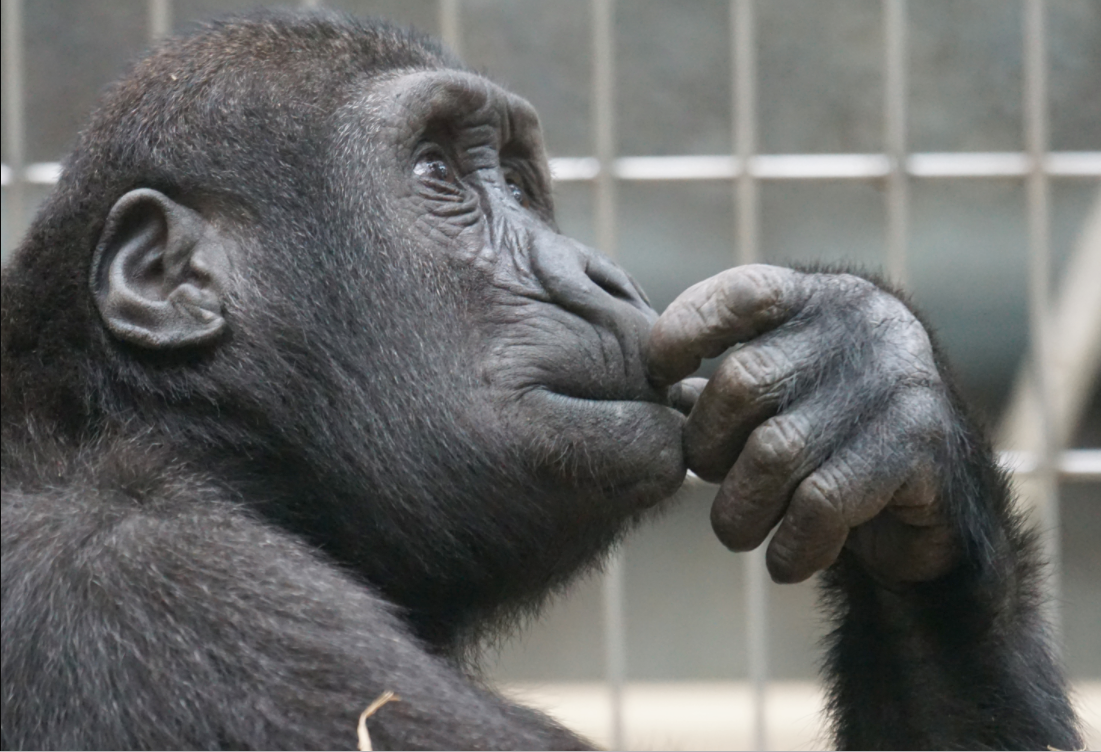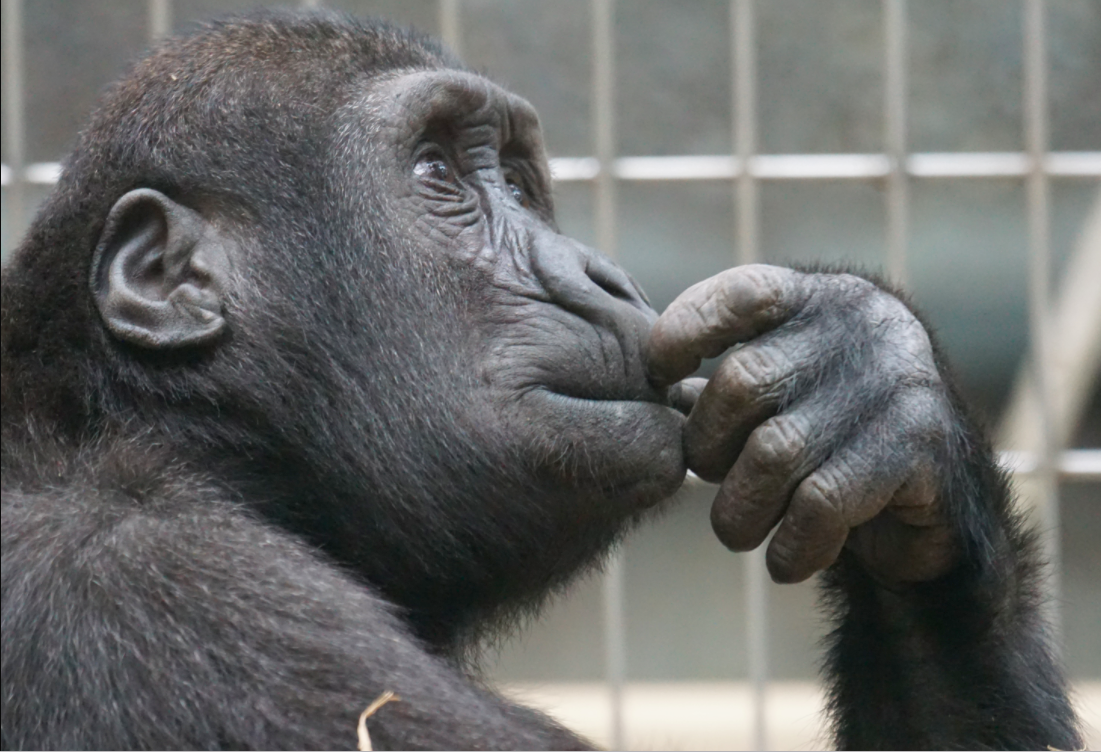
I know what you’re thinking – what the heck is gluteal amnesia?! Is my butt forgetful? What’s it forgetting?
Gluteal amnesia is the inhibition or mistimed activation of your gluteal muscles (AKA your butt), which can lead to back pain and a variety of other pains in your lower body.
Gluteal amnesia cost Tiger Woods at least two more majors, and that world-phenom freak-of-nature best-shooter-in-NBA-history Steph Curry was best known for his papier mâché ankles until Keke Lyles taught his butt to work like, well, a butt.
Gluteal amnesia is a modern plague that can rob you of years of active life. One look around your local supermarket will reveal a plethora of gait abnormalities: waddling, pelvic drop, to falling from side-to-side with each step. Each of these turns that 10,000 steps on your Fitbit from an asset to a liability. And it doesn’t just haunt us regular folks. Gluteal amnesia cost Tiger Woods at least two more majors, and that world-phenom freak-of-nature best-shooter-in-NBA-history Steph Curry was best known for his papier mâché ankles until Keke Lyles taught his butt to work like, well, a butt.
If you’re on the road to quitting sitting, pay attention, because proper glute activation is necessary to stabilize your hip socket while you stand. Your abs and your glutes should be mildly active at all times. This doesn’t mean a hard flex or squeeze, just available and reporting for duty. Are yours?
Here’s the quick test that started Curry on the path to world domination. Stand on one leg and lean forward, raising your opposite leg behind you and stretching your arms forward. Get long like an airplane. If you look like a perfect 10 on a balance beam with each leg, see you next time. Otherwise, read on.

If you’re still with us, it’s because your single leg airplane looked more like an Airbus Beluga than an F-22. The good news is this is totally fixable with a little bit of work. There are plenty of exercises you can do in the gym that might speed your recovery, but we wanted to bring you some exercises you can do at your desk – while working. Well.. maybe you ought to take a break during some of these actually..
We’ve broken down some exercises for you in order of beginner, intermediate, and advanced. Make sure you’re able to master each exercise before moving on to the next.
Beginners
For beginners, we suggest standing on one leg, and a single leg raise.
Stand on One Leg
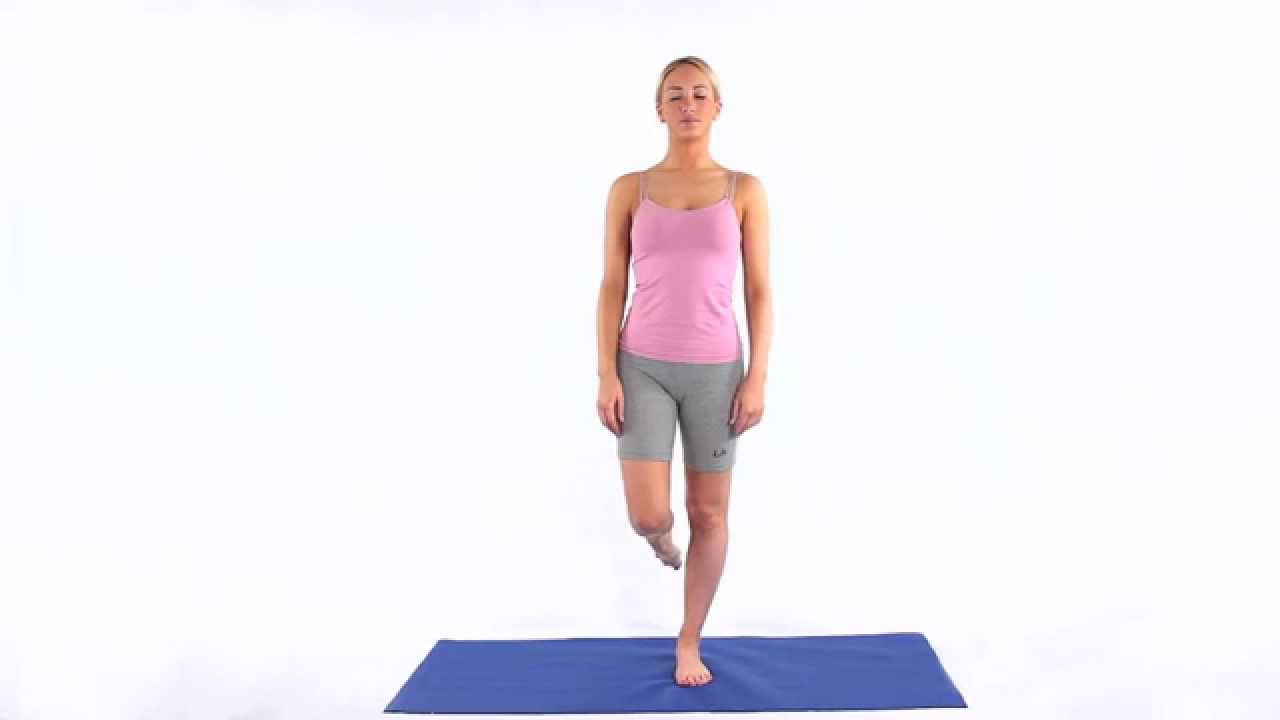
Standing on one leg is just as it seems. Stand with your feet shoulder distance apart. The main focus is on maintaining a parallel pelvis to the floor. When done properly, your medial glute (the side of your butt) should hold your hips level when you lift up the opposite leg.
Single Leg Raise
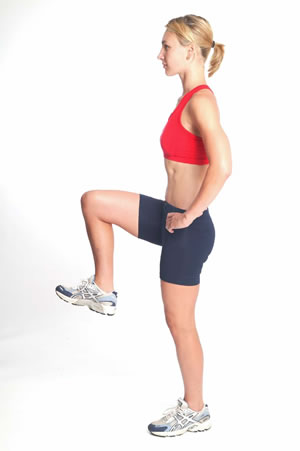
Once you’ve mastered standing on one leg with hips parallel to the ground, try raising one leg.
Stand with feet shoulder distance apart. Lift one leg up a few inches off the ground in front of you. Focus on maintaining parallel hip levels throughout while squeezing your glutes as you lift your leg.
These beginner exercises will develop muscle memory and train you to stabilize your pelvis with your glutes as you stand, walk or run.
Intermediate
After mastering the beginner exercises, we suggest some simple leg lifts. The key here is to squeeze your glutes maintain level hips throughout.
Side Leg Lift
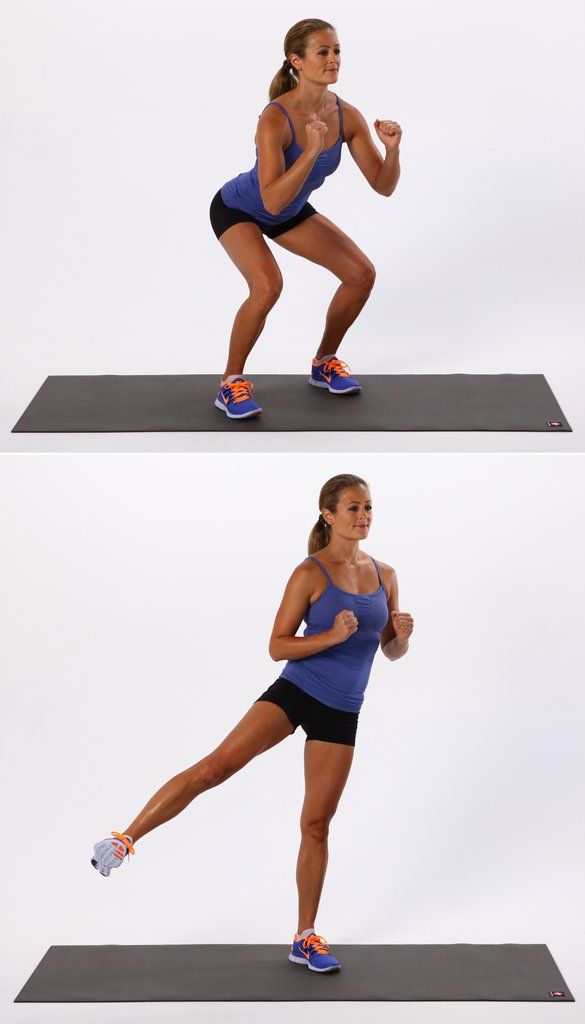
Stand with feet shoulder distance apart. Maintain parallel hip levels and lift one leg sideways. Focus on driving through your heel, squeezing your butt and maintaining a slightly curved back.
Single Leg Backwards Kickbacks
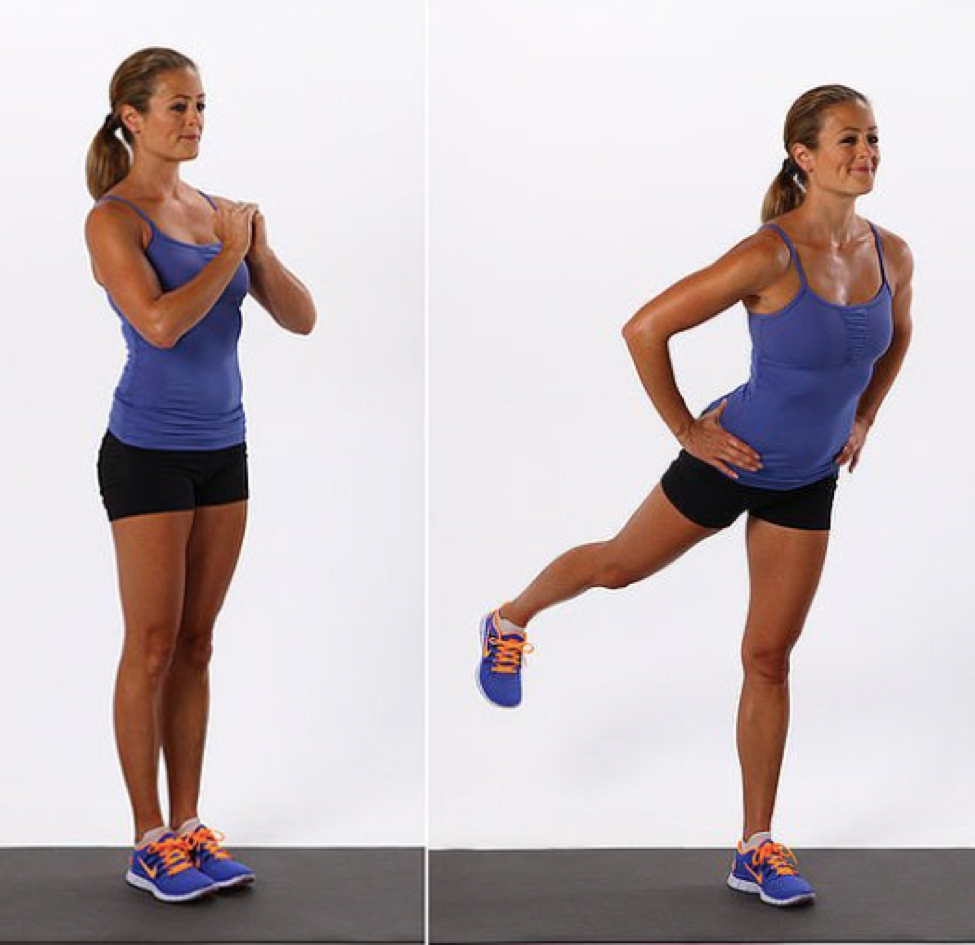 These are very similar to the above kickbacks. The difference here is that you want to lift your leg back at a 45-degree angle straight back as shown in the photo above.
These are very similar to the above kickbacks. The difference here is that you want to lift your leg back at a 45-degree angle straight back as shown in the photo above.
Your range of motion may be limited by your flexibility. Engage your abs, and if necessary limit your movement to prevent your back from overarching.
Advanced
For the advanced exercises, we choose three that might take some courage to do at your desk, but will be easily sneaked into a park or on your break.
Single Leg Deadlift with no weight

Stand feet shoulder width apart. As you lift one leg straight back, dip your arm straight down and touch the ground as your leg is horizontal to the floor.
Don’t use speed and momentum as you go up, focus on using your butt cheek to pull your body into an upright position. And make sure you don’t round your back out. Maintain a flat back horizontal to the floor.
Bird Dog

Many people recommend the Superman exercise for gluteal activation, but the Bird Dog is a better option because it encourages a neutral spine. An overextended spine can seriously injure an already damaged back.
With your hands under your shoulders and your knees under hips, kick one leg out and extend the opposite arm. The key here is to move slowly, reach as far as possible without lifting your arm or leg high, and last but not least squeeze those glutes! Lower your arm and leg and bring them together under your body before extending back out. Repeat.
Deep Squat
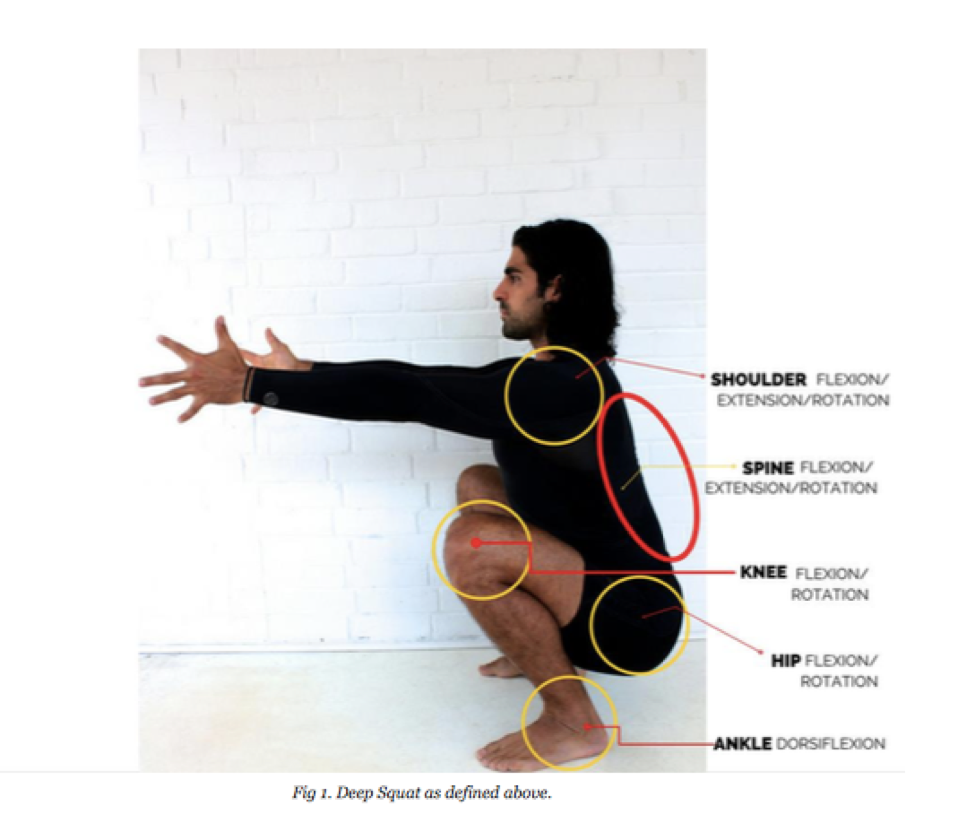
Lastly, we recommend the deep squat. This can take your function and mobility to a whole other level!
Drop down into a squat with your hip joints as close to the floor as possible with the entirety of the feet in contact with the floor. Raise your arms out in front of you as you descend to help you maintain your balance as you sit back into the squat.
If you’re not able to keep your weight on your heels, or if they come off the ground, place your heels on a slightly raised surface, such as a wood board or the edge of your anti-fatigue mat!
In conclusion, we’re all a product of our environment and in the modern world that means a lot of deflated and forgetful glutes. It’s time for a revival movement! We’ve given you an easy check-up in the single leg airplane. If you’re wobbling from mild to wild, build the suggested exercises into your daily routine and you’ll be firing on all cylinders in no time. You need that butt to stand, walk, and run, and I’m sure you won’t mind the fringe benefits.
REFERENCES
Dagher, Georges (2017) “As Essential as Brushing Your Teeth: The Deep Squat,” Journal of Evolution and Health: Vol. 2: Iss. 1, Article 15
Jeffrey Tucker. “Sitting Is the New Smoking.” Dynamic Chiropractor. N.p., 15 July 2013. Web. 18 July 2017.
McGill, Stuart, PhD. “Core Training: Evidence Translating to Better Performance and Injury Prevention.” Strength and Conditioning Journal (n.d.): n. pag. Www.nsca-lift.org. Spine Biomechanics, Department of Kinesiology, Faculty of Applied Health Sciences, University of Waterloo, Waterloo, Ontario, Canada. Web.
Reiman, M. P., L. A. Bolgla, and J28 K. Loudon. “A Literature Review of Studies Evaluating Gluteus Maximus and Gluteus Medius Activation during Rehabilitation Exercises.” Physiotherapy Theory and Practice. U.S. National Library of Medicine, 28 May 2012. Web. 18 July 2017.
Iggulden, Thomas. “Why Is ‘Good’ Posture so Important?” Bunting and Carlton Chiropractic Clinic. N.p., 11 July 2016. Web. 18 July 2017.
“3 Bird-Dog Exercise Variations (Video & Photos).” BuiltLean. N.p., 20 Feb. 2016. Web. 18 July 2017.

